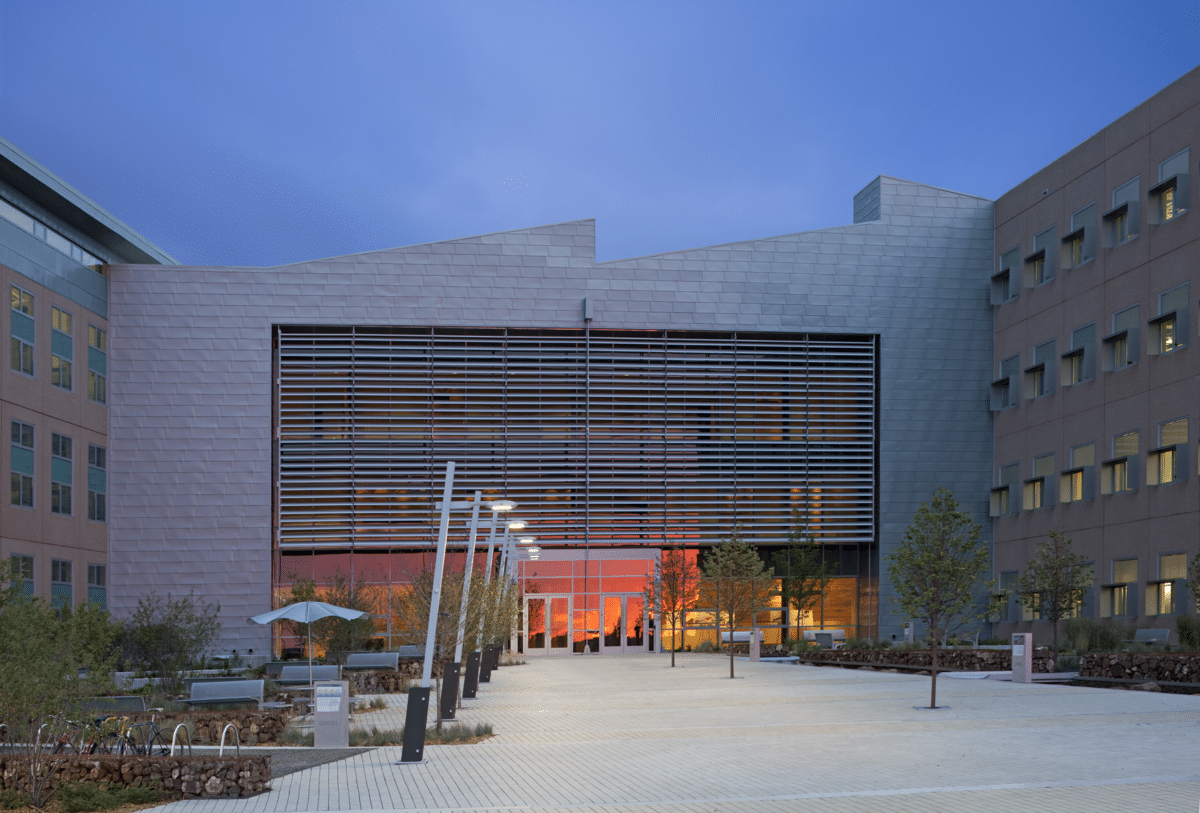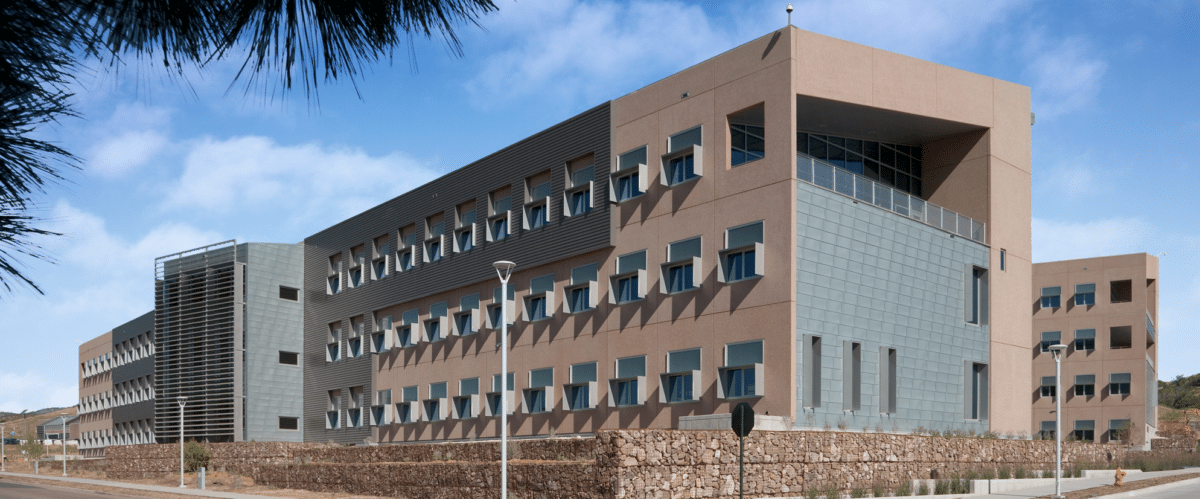Architectural Grilles & Sunshades’ sun control innovations transform the Research Support Facility in Colorado.

Custom sunshades from AGS block and diffuse direct sunlight in summer while letting in sun to passively heat a space in winter. [Photo: Courtesy of AGS]
The conference room and lobby at the National Renewable Energy Laboratory’s (NREL) Research Support Facility (RSF) face south and east, and in Golden, Colorado, that means quite the view. To frame the postcard like environs, the team at RNL Design, including Senior Project Manager Michael Simpson, wanted full, clear glass to capture the views, but a glass vista comes with issues that ants under a magnifying glass know all too well—melting temperatures and pounding glare. Fortunately, innovative sunshades offered a beautiful fix. These customizable features were installed on the outside of the RSF, shielding it from direct sun, while allowing all the benefits of natural light into the building.
The custom sunshades from Architectural Grilles & Sunshades (AGS) block and diffuse direct sunlight in summer, while allowing the sun to heat the space passively in winter. This is especially beneficial in a room with a lot of glass, which can be a finicky material to properly insulate when temperatures drop. AGS also makes grilles, light shelves, and trellises, although sunshades are their flagship product.
Up to the Challenge
Daylighting effectively is a delicate balance between heat gain, adequate light, usage of power, and insulation—especially in a facility as big as RSF’s more than 350,000 square feet. “It’s essential in offices to have enough light to minimize electrical loads, but too much direct light equals glare, which makes the office less comfortable,” Simpson says. The RNL Design team didn’t want to use too many blinds. Instead, they wanted an option that allowed them to diffuse sunlight from the outside.
To keep artificial lighting at bay, RNL knew it was crucial to keep sunlight flowing into the facility. Simpson worked with AGS to develop sunshades that would eliminate heat build-up and glare without blocking natural light. Sunshades at the conference room, lobby, and conference center did the trick; they were placed so they redirected harsh light with a more diffused version. “We pretty much eliminated direct sunlight year-round,” Simpson says.

[Photo: Courtesy of AGS]
Custom Creations
John Trainor, founder and general manager of AGS, is no stranger to innovation, whether it’s starting his own company or making products in-house so he can deliver custom orders to his clients. AGS also ships all of its sunshades fully fabricated in large crates instead of shipping them as individual parts that need to be assembled onsite. This saves clients costly field time.
“RNL knew exactly how much shade they needed, but they didn’t know how to make it work. That’s where we came in—we get involved with engineering pre-design. Architects like us because if they can draw it, we’ll build it,” says Eric Niemeyer, national director of sales for AGS. To create the perfect angles for the sunshades, AGS works with the sun at different times of year. “At 8am in June it’s at 28 degrees and at 8am in December it’s at six degrees,” Trainor says.
The design of the sunshades was tailored to RSF every step of the way. On the east facade of the facility, a lobby and common area link the two office wings. RNL wanted to use a vertical orientation of the sunshades, despite the fact that sunshades on this facade are generally horizontal. Instead of stainless steel cables to support the sunshades, RNL wanted to simplify the engineering. “We were able to minimize their sight line by coming up with a small enough tube—a two-by-two square tube of extruded aluminum—that also minimized cost,” Niemeyer says.
Tinted or mirrored glass, which is generally more expensive, reflects and filters glare, but for clear glass applications, sunshades secure the best of both worlds by cutting glare and still providing full views. Sunshades help buildings save money, too; by cutting passive heat gain, smaller HVAC units can be installed and subsequent heating bills are slashed for good.
“Sunshades help promote a better work environment,” Niemeyer says. “You’re not going to want to sit in a corner office that has direct sun from 10am to 8pm.” The addition of sunshades helped the project achieve LEED Platinum and net zero status, too, and that’s as important to NREL as a leader in renewable energy as it is to AGS.

Sunshades like the ones used by NREL cut glare while still providing full views. [Photo: Courtesy of AGS]
Built to Last
Aluminum, a 100% recyclable material, is a staple of AGS. “It’s important for us to protect the environment we live in and to build a building that will last for 50 years or more, as opposed to something disposable you’re throwing in a dumpster,” Trainor says. “We want to leave the planet better than we found it.”
As one of the nation’s largest net zero projects, RSF demonstrates that net zero design can be contemporary, livable, and even cost effective. “Anybody can stick a bunch of solar panels on top of a building and make it net zero, but that’s not really the point of net zero design. You have to have a whole building approach,” Simpson says. “Sunshades are a part of that.”
Read more about Architectural Sunshades & Grilles.
